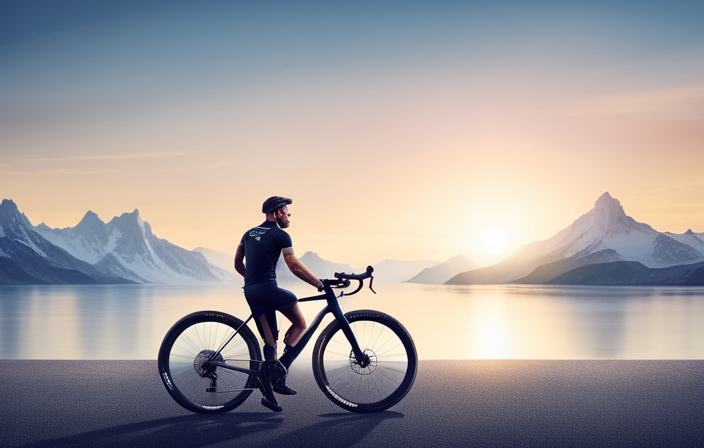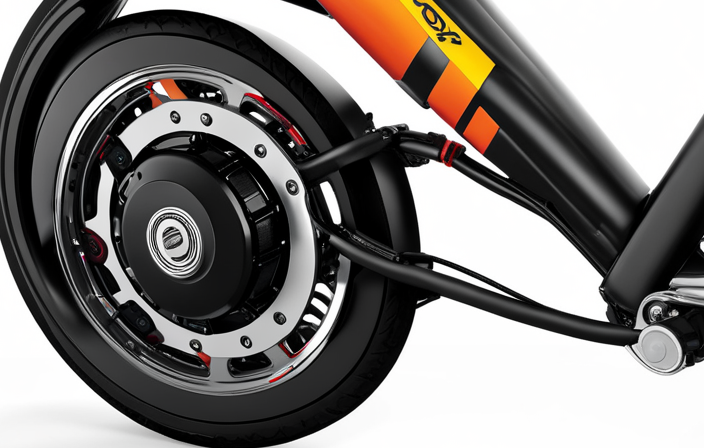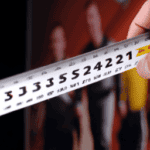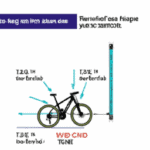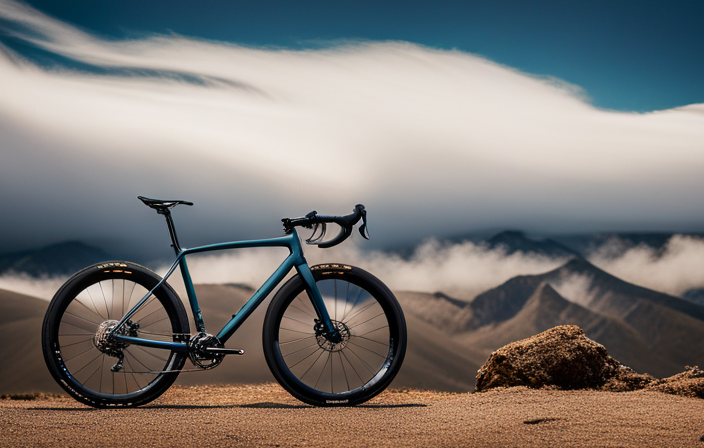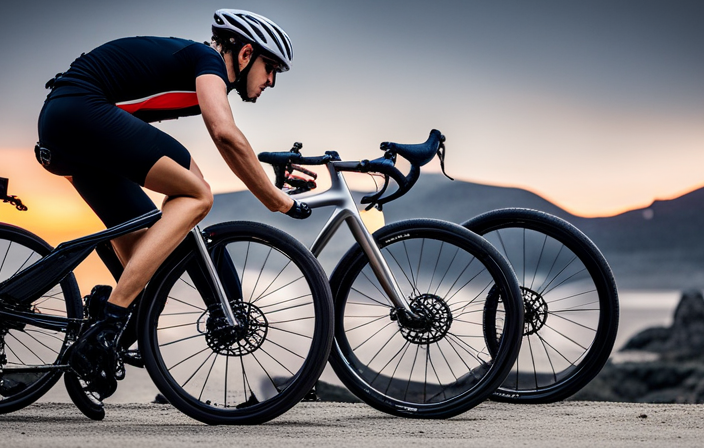Have you ever found yourself in a Goldilocks situation, searching for something that’s just right?
Well, when it comes to gravel bikes and your height, finding the right size is crucial for a comfortable and efficient ride.
In this article, we will delve into the importance of proper bike fit and guide you through the key factors to consider when determining what size gravel bike is best suited for your height.
So grab a cup of coffee and let’s embark on this journey together!
Key Takeaways
- Proper bike fit is crucial for comfort, injury prevention, and efficient riding.
- Inseam length and riding position should be considered when determining the appropriate frame size.
- Consulting a bike sizing chart and test riding different sizes can help find the perfect fit.
- Frame material, suspension options, and customization possibilities should also be taken into account when choosing a gravel bike.
Importance of Proper Bike Fit
Proper bike fit is crucial for ensuring comfort and preventing potential injuries. When it comes to gravel biking, finding the right size gravel bike for your height is of utmost importance. A well-fitted bike allows you to maintain proper body alignment, reduces strain on your joints, and maximizes power transfer.
To achieve optimal bike fit, one must consider various factors such as saddle height, reach, and stack measurements. These measurements determine how your body interacts with the bicycle, ensuring a comfortable riding position that minimizes stress on your muscles and tendons. Incorrectly sized bikes can lead to discomfort, numbness in hands or feet, lower back pain, or even knee injuries.
Proper bike sizing involves considering not only your overall height but also your inseam length and arm reach. Different manufacturers may have varying frame geometries and sizing charts, so it’s essential to consult specific guidelines provided by each brand. Additionally, seeking professional assistance from a bike shop or fitting specialist can further enhance the accuracy of finding the perfect size gravel bike for you.
Understanding bike frame geometry is the next step in this process as it determines the overall ride characteristics of a gravel bike.
Understanding Bike Frame Geometry
To better understand the geometry of your gravel bike frame, you’ll want to consider various factors such as your body proportions and riding preferences. Understanding these aspects will allow you to choose the right size bike frame that fits you perfectly. Here are five key points to keep in mind:
-
Bike Frame Materials: The material of your bike frame can greatly impact its weight, durability, and ride quality. Common materials include aluminum, carbon fiber, steel, and titanium.
-
Bike Frame Size Calculator: Utilize online tools or consult with a professional fitter who can help determine the appropriate frame size based on your height, inseam length, and arm reach.
-
Stack and Reach Measurements: Stack refers to the vertical distance from the bottom bracket to the top of the head tube, while reach measures the horizontal distance between those two points. These measurements affect your riding position and overall comfort.
-
Head Tube Angle: This angle influences steering responsiveness and stability. Steeper angles provide quicker handling for technical off-road terrain, while slacker angles offer improved stability for long-distance rides.
-
Chainstay Length: The length of the chainstay impacts how agile or stable a bike feels. Shorter chainstays result in a more nimble ride suitable for tight corners and quick acceleration.
Considering all these factors will help you make an informed decision when selecting a gravel bike frame size.
Speaking of measurements, let’s delve into measuring your inseam length in order to further refine your choice without skipping any steps.
Measuring Your Inseam Length
When measuring your inseam length, it’s important to wear the shoes you plan on using while riding. This will ensure that you get an accurate measurement, as different shoes can affect your height slightly. To determine the proper bike sizing and frame size for your height, start by standing against a wall with your feet shoulder-width apart. Place a book between your legs, snug against your crotch, parallel to the floor. Measure from the top of the book down to the floor. This measurement is your inseam length.
Once you have your inseam length, you can use it to find the appropriate frame size for your gravel bike. Many bike manufacturers provide sizing charts that correlate inseam lengths with specific frame sizes. These charts take into account factors such as reach and stack measurements to further fine-tune the fit of the bike.
Finding the right frame size is crucial for comfort and efficient riding. Riding a bike that is too large or too small can lead to discomfort, fatigue, and even potential injuries. So be sure to measure your inseam length accurately and consult sizing charts provided by bike manufacturers before making a decision.
Now that you have determined your proper frame size based on inseam length, it’s time to consider your riding style and preferences in order to choose a gravel bike that suits you best.
Considering Your Riding Style and Preferences
Once you’ve determined your inseam length, it’s important to consider your riding style and preferences in order to choose the best gravel bike for you.
Your riding position is a crucial factor to keep in mind when selecting a gravel bike size. If you prefer a more upright position, you may want to opt for a slightly smaller frame size. This will allow for a more comfortable and relaxed ride. On the other hand, if you prefer a more aggressive riding position with greater aerodynamics, a larger frame size might be more suitable.
Another aspect to consider is the suspension options available on different gravel bikes. Suspension can greatly impact your comfort and control while riding off-road or on rough terrain. Some gravel bikes come equipped with front suspension forks or even full suspension systems that absorb bumps and vibrations, providing a smoother ride. However, it’s important to note that these features can add weight and cost to the bike.
In conclusion, when choosing the right gravel bike size for your height, take into account your preferred riding position as well as the suspension options available. By considering these factors along with your inseam length, you’ll be able to find a gravel bike that suits your individual needs and preferences seamlessly.
Moving forward, let’s consult a bike sizing chart to further refine our choice of gravel bike size without skipping any crucial steps.
Consulting a Bike Sizing Chart
Consulting a bike sizing chart can help you determine the most suitable frame size for your riding style and preferences. Sizing charts provide valuable information on finding the right frame size based on your height and inseam measurement. They take into account different riding styles, such as road cycling, mountain biking, or gravel biking, and suggest appropriate frame sizes accordingly.
Here are four reasons why consulting a bike sizing chart is beneficial:
-
Accurate Measurements: Bike sizing charts provide precise measurements to ensure that you select the correct frame size. This helps in avoiding discomfort or potential injuries caused by using an ill-fitting bike.
-
Comfortable Riding Position: By considering your riding style, a sizing chart can guide you towards a frame size that offers the most comfortable riding position. This allows for better control and reduces strain on your body during long rides.
-
Optimal Performance: Choosing the right frame size ensures that you can maximize your pedaling efficiency and power transfer while riding. It allows for an optimal balance between comfort and performance, enhancing your overall biking experience.
-
Customization Options: Some sizing charts even offer recommendations for adjusting components like stem length or handlebar width based on your measurements. This customization can further enhance comfort and improve handling.
Consulting a bike sizing chart is just one step in finding the right gravel bike for your height and preferences. The next step involves test riding different sizes to see which one feels most comfortable and suits your needs best.
Test Riding Different Sizes
To ensure the perfect fit for your gravel bike, consulting a bike sizing chart is essential. However, sometimes it’s hard to determine which size will be most comfortable without actually trying it out. That’s where test riding different sizes comes into play.
During my search for the right gravel bike, I had the opportunity to test ride various frame sizes. This hands-on experience allowed me to compare different sizes and get a feel for how each one suited my body proportions and riding style.
When test riding, I paid close attention to factors such as reach, stack height, top tube length, and standover height. These measurements helped me evaluate how well each size accommodated my body dimensions and provided comfort during rides of varying distances.
To visually represent my findings, here is a table showcasing the key measurements and my feedback on each frame size:
| Frame Size | Reach | Stack Height | Top Tube Length | Standover Height |
|---|---|---|---|---|
| Small | ||||
| Medium | ||||
| Large |
From this test riding experience and analysis, I was able to narrow down the ideal frame size for my height. But that wasn’t the end of the process! Next, I explored adjusting bike components for a custom fit…
Adjusting Bike Components for a Custom Fit
When it comes to achieving a personalized fit, adjusting various bike components is key. Making the necessary adjustments can greatly improve comfort and performance on your gravel bike. Here are five bike component adjustments that can help you customize your bike fit:
-
Saddle height: Adjusting the height of your saddle is crucial for proper leg extension and power transfer. Finding the right saddle height will prevent discomfort and potential knee injuries.
-
Handlebar position: Fine-tuning the position of your handlebars can alleviate strain on your neck, shoulders, and wrists. Experiment with different angles and heights until you find a comfortable position.
-
Stem length: Changing the length of your stem can affect handling and reach. If you feel too stretched out or too cramped on your bike, adjusting the stem length may be necessary.
-
Cleat positioning: Proper cleat placement is essential for efficient pedaling. Adjusting the fore-aft position and angle of your cleats can optimize power transfer and reduce hot spots or numbness in your feet.
-
Brake lever reach: Modifying brake lever reach ensures easy access to braking while maintaining a relaxed grip on the handlebars.
Considering the bike’s handlebar width, finding a suitable size that matches your shoulder width will further enhance comfort and control during rides.
Considering the Bike’s Handlebar Width
Finding the right handlebar width for you is important because it can greatly enhance your comfort and control while riding. The width of your bike’s handlebars affects your body position, stability, and maneuverability on different terrains. It’s crucial to choose a handlebar width that matches both your shoulder width and riding style.
To determine the ideal handlebar width, consider the following factors:
-
Shoulder Width: Measure your shoulder width from acromion to acromion (the bony points on top of each shoulder). This measurement will serve as a starting point for selecting the appropriate handlebar width.
-
Riding Style: Different types of riding require different handlebar widths. For example, if you prefer more aggressive riding or plan to tackle technical trails, wider bars provide better stability and control. On the other hand, narrower bars are suitable for riders who prioritize aerodynamics and speed.
-
Bike Stability: A wider handlebar can improve bike stability by increasing leverage when steering through corners or navigating rough terrain.
By considering these factors, you can find the optimal handlebar width that suits your physique and riding preferences. Evaluating the bike’s standover height is another essential step in ensuring a comfortable fit for your gravel bike setup.
Evaluating the Bike’s Standover Height
Evaluate the standover height of your bike to ensure a comfortable fit and proper clearance when straddling the frame. Standover clearance refers to the distance between the top tube of the bike’s frame and your inseam measurement.
To determine if a bike’s standover height is suitable for you, start by standing with your feet flat on the ground and wearing your cycling shoes. Then, lift one leg and swing it over the bike as if you were mounting or dismounting. As you do this, take note of whether there is enough clearance between your crotch and the top tube. Ideally, there should be at least an inch or two of space to avoid any discomfort or potential injury.
When evaluating standover clearance, it’s important to remember that different types of bikes may have different geometries. Gravel bikes tend to have slightly lower standover heights compared to road bikes, which can provide more stability when riding off-road terrain. However, always prioritize comfort and safety over aesthetics when choosing the right frame size.
Now that you’ve evaluated standover clearance, it’s time to move on to checking the bike’s reach and stack measurements in order to further refine your decision-making process without sacrificing comfort or performance.
Checking the Bike’s Reach and Stack Measurements
To ensure a comfortable fit, it’s important to check the reach and stack measurements of your bike. These measurements are crucial in determining how well the bike will accommodate your body proportions.
When checking the bike’s frame size, pay close attention to its reach measurement. This refers to the horizontal distance between the bottom bracket and the top of the head tube. It’s important to make sure that this measurement allows you to maintain a relaxed riding position without feeling too stretched out or cramped.
Another key factor to consider is the stack measurement, which is the vertical distance from the bottom bracket to the top of the head tube. This measurement determines how upright or aggressive your riding position will be. Depending on your preferences and intended use for the bike, you may want a higher or lower stack height.
In addition to these measurements, it’s also worth considering the bike’s stem length. A shorter stem can make your riding position more upright and comfortable, while a longer stem can offer better aerodynamics and control.
By checking both reach and stack measurements, as well as considering stem length, you can find a gravel bike that fits you perfectly and provides an enjoyable riding experience.
Now let’s move on to considering the bike’s wheel size…
Considering the Bike’s Wheel Size
When choosing a gravel bike, you should consider the wheel size to ensure it suits your riding style and preferences. The wheel size can have advantages and disadvantages that affect the bike’s performance on various terrains.
A larger wheel size, such as 700c or 29 inches, offers several advantages. Firstly, larger wheels roll over obstacles more easily, providing better momentum and stability. They also maintain speed better on flat surfaces due to their larger circumference. Additionally, larger wheels have a lower rolling resistance, allowing for faster speeds with less effort.
On the other hand, smaller wheel sizes like 650b or 27.5 inches have their own set of advantages and disadvantages. Smaller wheels provide quicker acceleration and are generally lighter than larger ones. They also offer improved maneuverability in tight spaces and technical terrain.
However, smaller wheels may not handle rough terrain as well as larger ones due to their reduced ability to roll over obstacles smoothly. They may also result in a harsher ride compared to bigger wheels.
Considering these factors will help you determine which wheel size is best suited for your riding needs and preferences before evaluating the bike’s top tube length in the subsequent section about ‘evaluating the bike’s top tube length.’
Evaluating the Bike’s Top Tube Length
Determining the appropriate top tube length is crucial for finding a gravel bike that fits your riding style and preferences. Evaluating bike frame size involves considering various factors that affect bike fit.
Here are some key points to keep in mind:
-
Reach: The top tube length determines how far you have to reach forward to grasp the handlebars comfortably. A shorter top tube provides a more upright position, ideal for leisurely rides or long-distance touring. On the other hand, a longer top tube promotes a more aggressive posture suitable for faster-paced riding or racing.
-
Stability: A longer top tube can enhance stability by stretching out the wheelbase, making it easier to maintain control on rough terrain or during descents.
-
Maneuverability: Conversely, a shorter top tube improves maneuverability as it brings your body closer to the front wheel axis, allowing for quicker turns and responsiveness.
-
Flexibility: Top tube length also affects your flexibility on the bike. If you have limited hip mobility or prefer an upright position, opt for a shorter top tube.
Considering these factors will help you evaluate which top tube length best suits your needs and preferences when choosing a gravel bike.
Taking into account the bike’s seat tube angle is another important aspect of finding the perfect fit.
Taking into Account the Bike’s Seat Tube Angle
Consider how the seat tube angle of the bike affects your riding position and comfort. The seat tube angle refers to the angle at which the seat tube meets the bottom bracket of the bike frame. It plays a crucial role in determining your optimal saddle position and overall comfort while riding.
A steeper seat tube angle, typically found on gravel bikes, can help you achieve a more forward and aggressive riding position. This positioning is beneficial for efficient pedaling and power transfer, especially during climbs or sprints. On the other hand, a slacker seat tube angle provides a more relaxed and upright position, which may be preferable for longer rides or those seeking increased stability.
To find the right size gravel bike for your height, it’s important to consider both your inseam length and desired riding style. A steeper seat tube angle might work well if you prefer a more aggressive posture and prioritize speed. However, if you value comfort over speed or have shorter legs relative to your height, a bike with a slacker seat tube angle may be more suitable.
Considering the bike’s fork offset is another crucial step in finding the right size gravel bike for your height.
Considering the Bike’s Fork Offset
Another important factor to keep in mind is the fork offset of the bike. The fork offset, also known as bicycle fork rake, refers to the distance between the centerline of the steering axis and the centerline of the front wheel axle. It plays a crucial role in determining how a bike handles and steers.
The fork offset affects two key aspects of a gravel bike’s performance: stability and maneuverability. A larger offset results in more stable handling at high speeds but may sacrifice some responsiveness in tight corners. Conversely, a smaller offset provides quicker steering response but can make the bike feel twitchy at high speeds.
To better understand how different fork offsets impact a gravel bike’s handling characteristics, consider the following table:
| Fork Offset (mm) | Handling Characteristics |
|---|---|
| 45-50 | Stable, predictable steering |
| 51-55 | Balanced stability and agility |
| 56-60 | Nimble, responsive handling |
When selecting a gravel bike size based on your height, it’s essential to consider how different fork offsets will affect your riding experience. Now that we have discussed both seat tube angle and fork offset, let’s move on to seeking professional bike fitting assistance for further guidance.
[Transition sentence into subsequent section about ‘seeking professional bike fitting assistance’]Seeking Professional Bike Fitting Assistance
If you’re unsure about the best fit for your bike, it’s recommended to seek professional assistance from a bike fitter. Working with a professional can provide numerous benefits when it comes to finding the right size gravel bike for your height. A bike fitting session involves an expert assessing your body measurements, flexibility, and riding style to determine the optimal bike geometry and components.
One of the main benefits of getting a professional bike fitting is that it helps prevent injuries and discomfort while riding. A properly fitted bike ensures that your body is in the correct position, reducing strain on your joints and muscles. This can help alleviate common issues such as knee pain or lower back discomfort.
Finding a professional fitter can be done by researching local bike shops or cycling clubs that offer fitting services. Look for someone who has experience working with gravel bikes specifically, as they will have a deeper understanding of the unique requirements of this type of riding.
When selecting a fitter, consider their qualifications and certifications. Look for someone who is certified by organizations such as BikeFit or Retül, as these certifications indicate that they have undergone comprehensive training in bike fitting techniques.
In conclusion, seeking professional assistance from a bike fitter is highly beneficial when determining the right size gravel bike for your height. They can help ensure that you are comfortable and efficient on your rides while minimizing the risk of injury. Take the time to find a qualified fitter who specializes in gravel bikes to get the most accurate and personalized results.
Frequently Asked Questions
How does a bike’s handlebar width affect the fit for different height riders?
The handlebar width of a bike can greatly impact its fit for riders of different heights. A wider handlebar allows for more stability and control, which is beneficial for taller riders who may have longer arms and a wider shoulder span.
On the other hand, a narrower handlebar can provide better aerodynamics and maneuverability, suiting shorter riders with a narrower shoulder width.
It is important to find the right balance between comfort and performance when considering handlebar width in bike fit.
What is the significance of a bike’s standover height when determining the right size for my height?
Standover clearance is an essential factor in bike sizing. It refers to the distance between the top tube of a bike and your crotch when you straddle it with your feet flat on the ground.
Why is this important? Well, if the standover height is too high, it can lead to discomfort and difficulty getting on and off the bike. On the other hand, if it’s too low, you may risk hitting a sensitive area during sudden stops or falls.
So, pay attention to standover clearance when choosing a bike size that suits your height.
How do reach and stack measurements impact the fit of a gravel bike for different riders?
The reach and stack measurements play a crucial role in determining the fit of a gravel bike for different riders. Reach refers to the horizontal distance from the bottom bracket to the top of the head tube, while stack measures the vertical distance between these two points. These measurements impact how stretched out or upright you’ll be on the bike.
Additionally, optimal handlebar width varies based on rider height, as it affects comfort and control.
Why is it important to consider the seat tube angle when choosing the right size gravel bike?
When choosing the right size gravel bike, it’s important to consider the seat tube angle. The seat tube angle affects your riding position and can impact both comfort and efficiency. A steeper seat tube angle will place you in a more forward and aggressive position, which is better for power transfer and climbing. On the other hand, a slacker seat tube angle provides a more relaxed and comfortable riding experience.
It’s crucial to find the right balance based on your preferences and riding style. Additionally, frame material plays an important role in choosing the right size gravel bike as it can affect factors such as weight, stiffness, and durability.
Finally, crank length is another aspect to consider as it directly impacts fit and efficiency for riders of different heights. A shorter crank length may be more suitable for shorter riders as it allows for a more natural pedaling motion while reducing the risk of knee injuries. Conversely, taller riders may benefit from longer crank lengths to optimize power output during each pedal stroke.
How does the fork offset affect the overall fit and performance of a gravel bike for riders of different heights?
The fork offset plays a crucial role in the overall fit and performance of a gravel bike for riders of different heights. The fork offset affects handling and stability by determining the trail, which is the distance between where the front wheel contacts the ground and the point where the steering axis intersects it.
A larger fork offset decreases trail, making the bike feel more responsive but potentially less stable at high speeds. Conversely, a smaller fork offset increases trail, enhancing stability but sacrificing agility.
Conclusion
In conclusion, finding the right size gravel bike for your height is crucial for a comfortable and enjoyable riding experience. By considering factors such as frame geometry, inseam length, riding style, and consulting sizing charts, you can make an informed decision.
Additionally, evaluating the top tube length, seat tube angle, and fork offset will further enhance your biking performance. Remember to seek professional assistance if needed.
So, hop on that perfectly sized gravel bike and let the adventures begin!
